Today I bring you a commemoration of a commemoration!
‘IN MEMORIAM SECUNDI IUBILAEI EVANGELICI ANNO SECULARI MDCCXVII DIE 31 OCT[obris] CELEBRATI SENAT[us] FRANCOFURTI F [ieri] F[ecit] I I F’
The text above is found inscribed on a Reichstaler coin set into the base of a beaker going into the Europe Galleries.
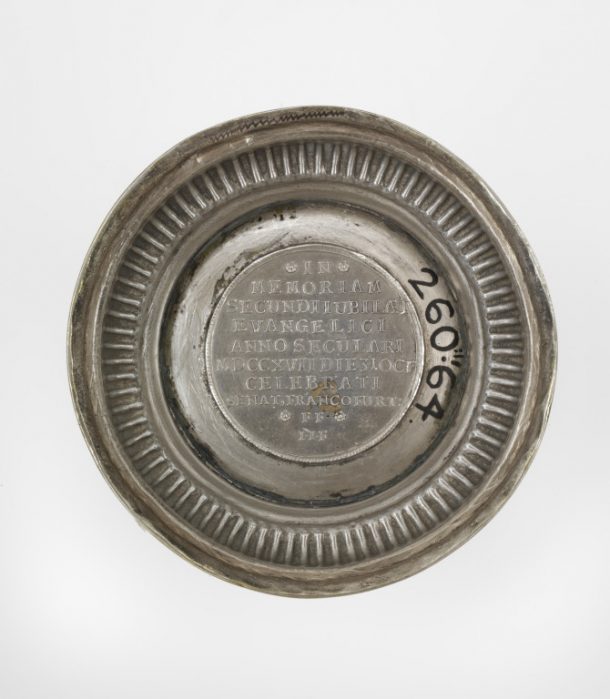
The inscription translates as:
‘In Memory of the Second Evangelical Jubilee Celebrated in the Secular Year MDCCXVII [i.e. 1717] on the 31 October, the Council of Frankfurt caused [this] to be made. I I F’.
The last letters of I I F, possibly stand for ‘In Ipso Francofurto’ – ‘In Frankfurt Itself’.
October 31st is today known and celebrated as the religious holiday ‘Reformation Day’. Although timely in terms of today’s date, this view of the beaker is admittedly not its most visually attractive, so here is a more conventional view of this simple-yet-striking, silver-gilt beaker and cover.
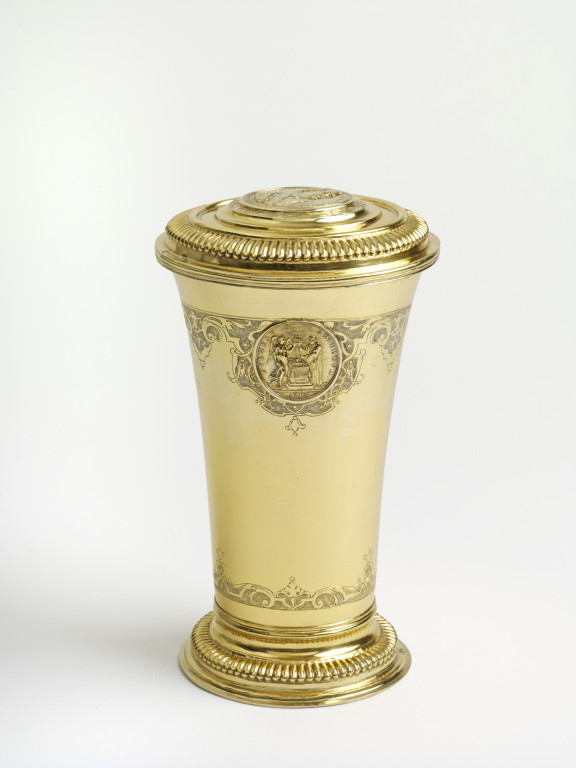
The beaker was made by Sigmund Dockler in 1717, created (or ‘raised’) out of a single sheet of metal, with the foot soldered onto the base. We know that Dockler made it because his maker’s for 1696/7-1753 is stamped on the rim of the foot and the upperside of the rim of the lid. The N in a circle, also on the upper side of the rim of the lid, is the 1717 town mark for Nuremberg.
Nothing is known of this beaker’s early ownership, although no doubt its first owner was a wealthy Protestant.

I’ve been told that Dockler’s mark is a pun on his name (‘Docke’ is ‘doll’ in South German dialect) and depicts ‘the figure of a doll in a long dress, standing with arms akimbo’. I can make out the dress shape now that I know but if I’d been asked to describe the stamp mark I’ll admit that I would have more likely gone for ‘short 1980s disco dress’ or ‘angular cartoon skull’!
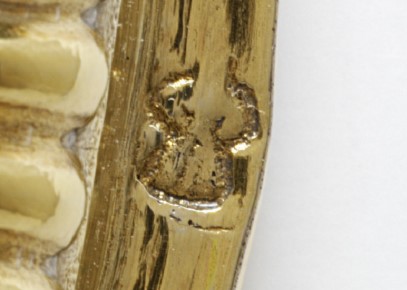
The beaker is set with five coins and medals commemorate the 200th anniversary of Martin Luther’s first act as a Protestant reformer in Germany in 1517 – his nailing of 95 Theses on the door of the castle church at Wittenberg.
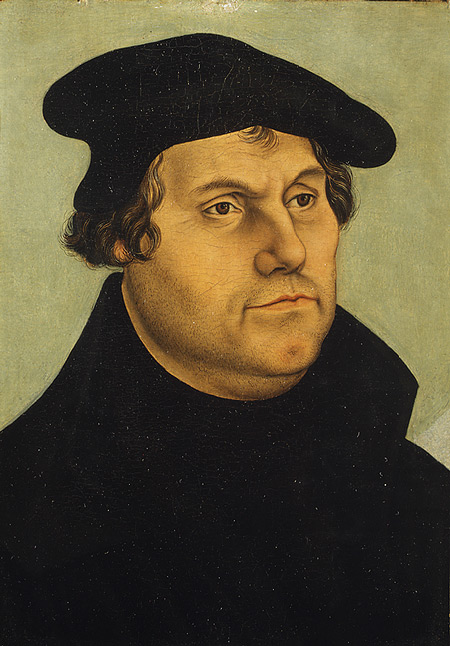
Luther’s Theses were a list of challenges to church practices, such as the sale of pardons for sins issued by the pope (known as indulgences). Although Luther was not the first to call upon the church to reform its practices, his 95 Theses and the debates which followed upon them acted as a catalyst for a reforming movement that split the Western church into catholics (who accepted the pope as supreme spiritual leader on earth) and protestants (who did not).
The medal set into the lid is a Nuremberg one dated 1717, by Philipp Heinrich Müller (1654-1719). It depicts Martin Luther and includes an inscription that translates as: ‘Martin Luther doctor of theology The word of the Lord remains in eternity’.
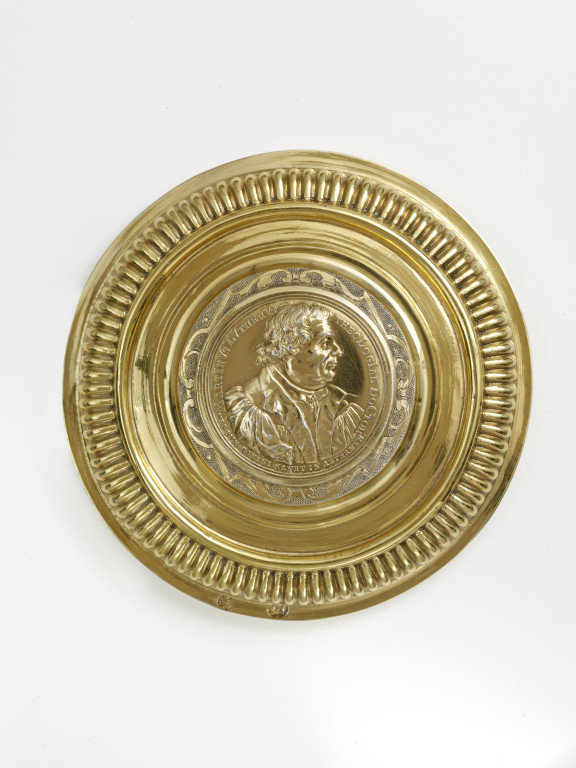
Three further coins and medals are set into the sides of the beaker. One is a half thaler of 1717, perhaps from Nuremberg; the second is an Augusburg medal of 1717, by Philipp Heinrich Müller (1654-1719); the third is a Saxon electoral medal of 1717 by Georg Wilhelm Vestner (1677-1740).
The imagery and inscriptions on the coins and medals focus on the notion of light, as Protestants interpreted the criticisms of Luther’s 95 Theses as the dazzling light of reform shining upon the Catholic church.
The face of the medal visible on the underside of the lid is a good example of this ‘light’ imagery. The text engraved round the edge is a quotation from the Old Testament Book of the prophet Isaiah which translates as ‘And if they speak not according to the word, this will not be to them morning light’. It is accompanied by an image of Religion personified and kneeling, chalice and cross in her right hand. In his lectures on Isaiah, Luther had interpreted the ‘morning light’ as ‘the Gospel, the Word of God, which is the light that has arisen in Christ’.
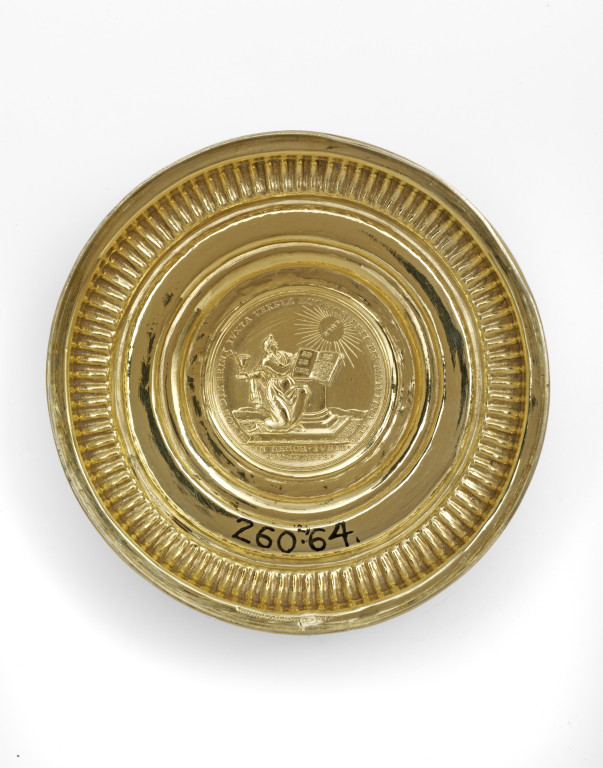
As I showed you at the start, the base of the beaker is set with a Frankfurt Reichstaler of 1717. Below you can see the rather more shiny face of that same coin, as seen when looking down into the inside of the beaker. It depicts an open bible on a rock sticking out of the sea, above which is the illuminated symbol of the Trinity. This image illustrates a belief that the bible alone (and not the institution of the Catholic church) is the foundation upon which Christian faith rests

On a rather lighter note, it may also be a witty allusion to the way in which the reforming message of the coins would emerge as the liquid that filled the beaker was drained!
